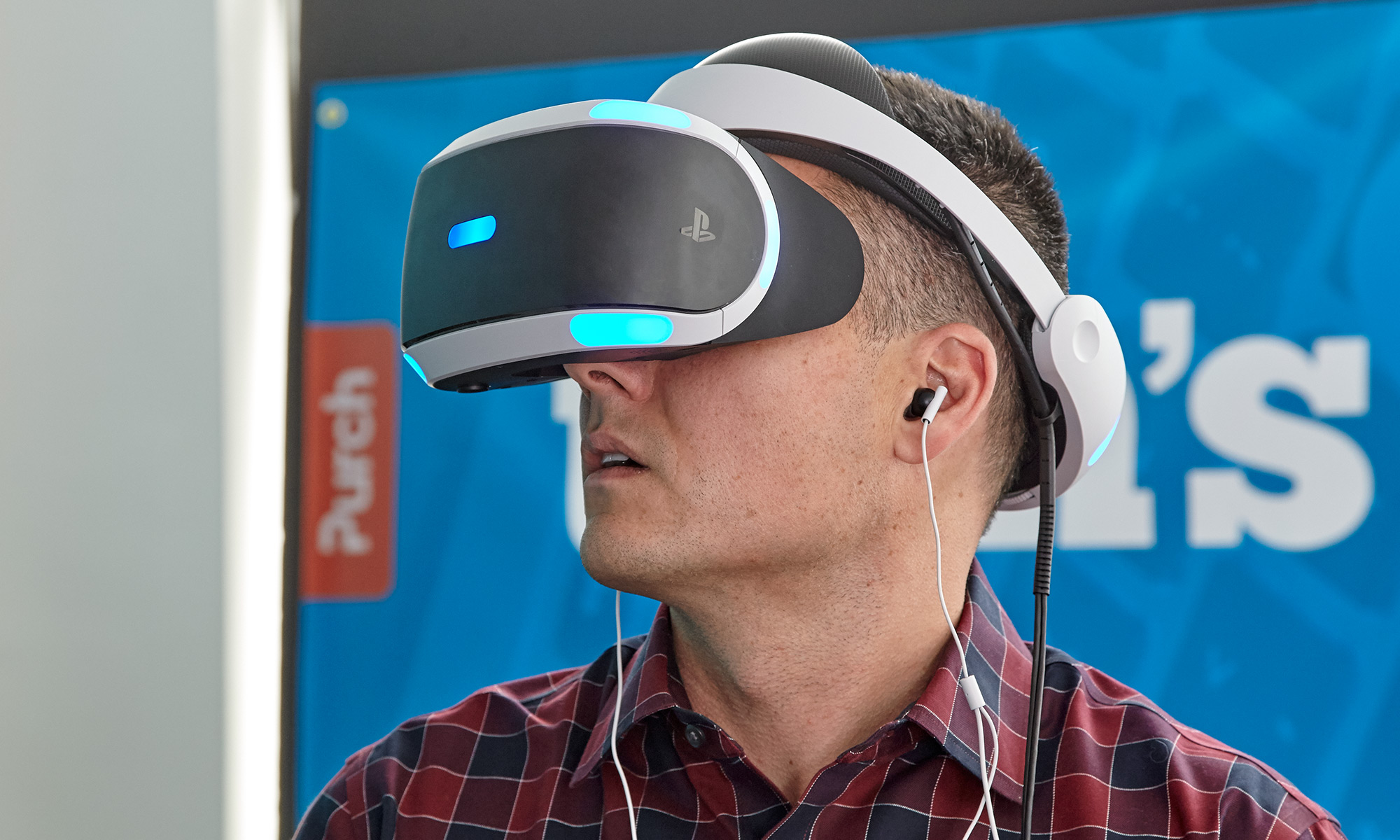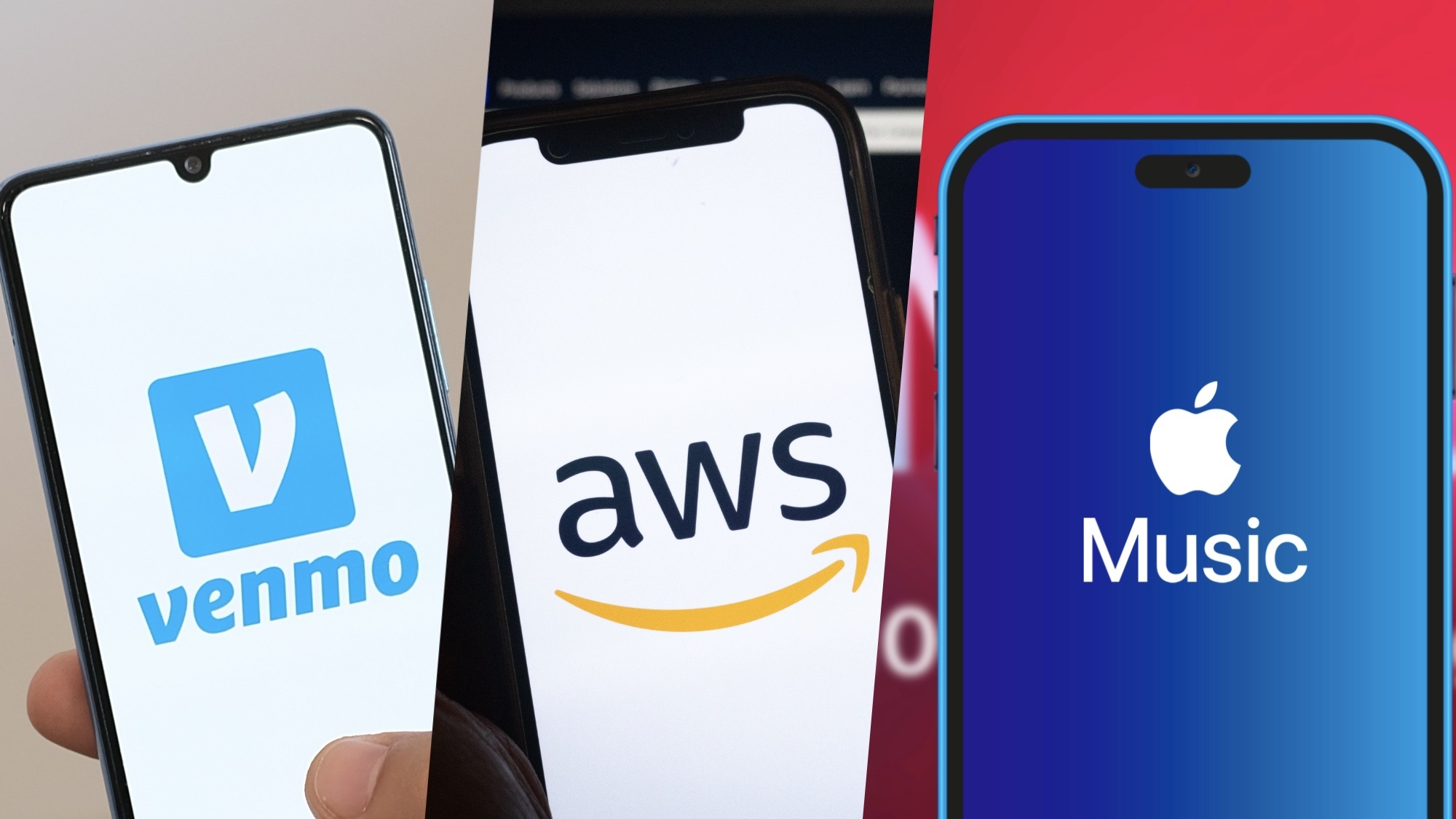Tom's Guide Verdict
PlayStation VR delivers compelling games in a comfortable, easy-to-use headset that won't break your budget.
Pros
- +
Striking design
- +
Games created by well-known companies
- +
Fairly easy setup
- +
Relatively affordable
Cons
- -
Camera can be very exacting
- -
Not as visually sharp as competition
Why you can trust Tom's Guide
EDITOR'S NOTE: The PlayStation VR won a "highly recommended" honor for best VR headset in the Tom's Guide Awards 2021 for gaming.
Sony’s PlayStation PlayStation VR doesn't waste time with making apps; it sticks to its bread and butter, delivering compelling games with an extra dose of immersion.
Unlike competing VR systems with their tangles of wires, PlayStation VR is like its companion console, simply plug it in and play. The 40 million people who already own PS4s don't have to buy another console, just the headset, effectively making it the cheapest high-end VR system on the market. Buoyed by a host of titles including Batman: Arkham VR, Resident Evil 7 and Moss, PlayStation VR is one of the best VR headsets available.
PlayStation VR review: Design
You would never mistake PS VR for one of the other headsets on the market, thanks to its emphasis on comfort. Instead of aping the standard format, usually a large piece of plastic with a pair of cloth headbands attached, Sony's headset is an exercise in moving parts.
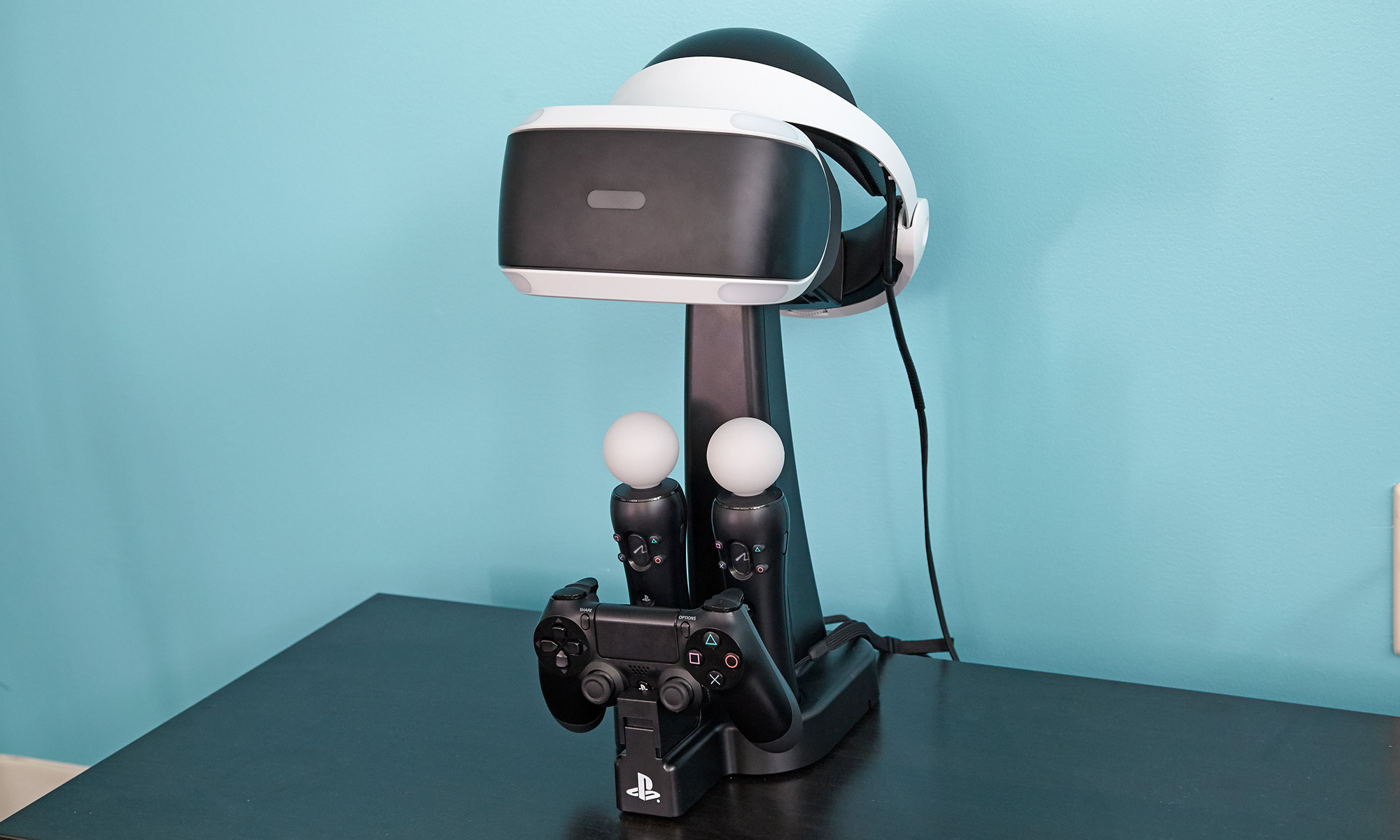
The main part of the headset is a large black faceplate, called the scope, which has a centrally-placed tracking light. The sides of the faceplate are stamped with glossy PlayStation logos for a nice visual contrast. A thick white border holds six additional ovular tracking lights that glow when the headset is connected, and look cool to boot.
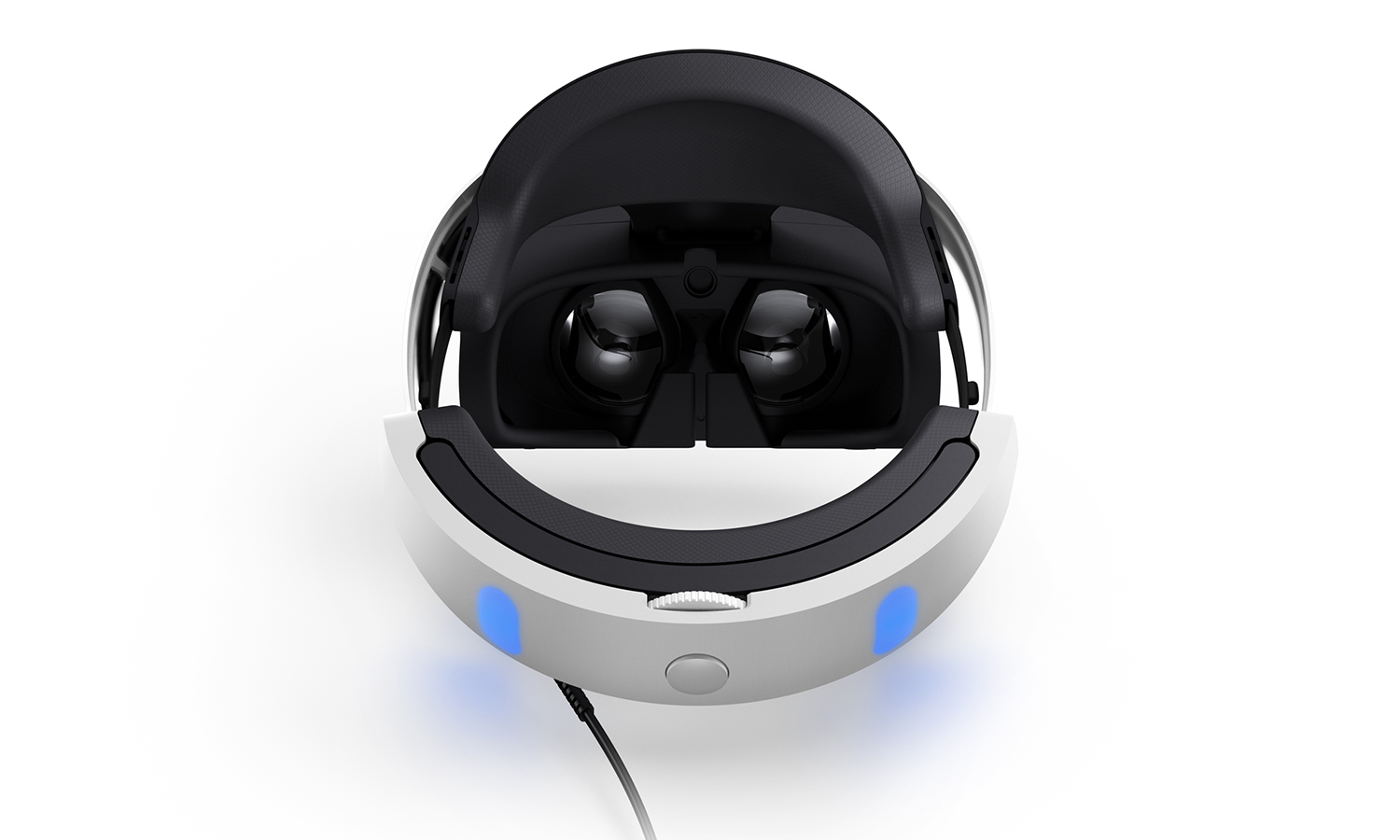
Inside the headset, you'll find the lenses and the 5.7-inch, 1920 x 1080p OLED display and one of my favorite parts of the PSVR, the black soft-touch rubber light shield. While other VR headsets have gone with some sort of foam cushioning, the PS VR's rubber flaps gently brush against the top part of my face. Along the bottom is an integrated microphone and an adjustment button that, when pressed, allowed me to slide the faceplate forward or backward to achieve a comfortable fit and an optimal viewing angle.
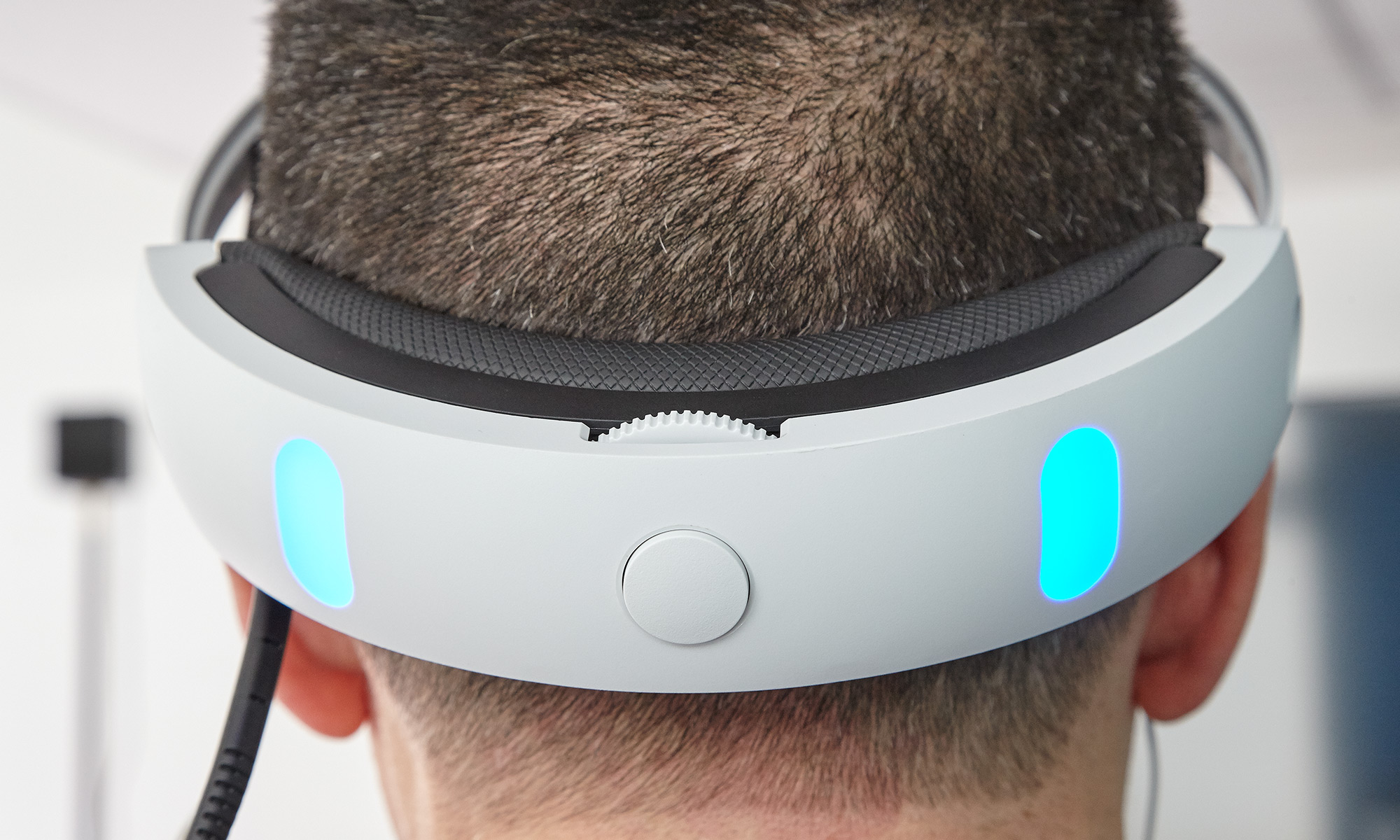
Attached to the top of the scope is a white halo made of white hard plastic lined with black textured foam. Sony placed most of the ballast in the back of this rather stylish, yet unassuming headband, which makes for a more comfortable fit.
Get instant access to breaking news, the hottest reviews, great deals and helpful tips.
Pulling on the back of the strap reveals black stretchy cables that allows you to fit the device on your head. There's a white adjustment dial in the back to tighten the grip, but if it's too uncomfortable, the headband-release button quickly loosens things up.
Along the left side of the headset is a long black cable that extends downward into the PS VR's inline remote. The white and black remote is larger than what you'd see on a pair of headphones and has buttons for power, mute and volume.
In order to operate the remote while wearing the headset, Sony has wisely created some tactile cues. The power button is recessed into the control, while the mute button sits flush, and the pair of volume buttons jut outward. The remote also has a 3.5mm headphone jack to plug in a pair of headphones or earbuds.
PlayStation VR review: Comfort
Despite my voluminous locks, I had no problem getting a secure, comfortable fit with the PS VR.

I wore the headset for approximately 1.5 hours before I took it off to grab a bite to eat. During that time there was no discernable pinching or pressure as the light shield rested gently on my face. Best of all, there weren't any telltale headset marks on my face.
PlayStation VR review: Setup
Before you can go traipsing through PlayStation-approved virtual worlds, there's a little matter of setting everything up. Prepping PS VR for use isn't nearly as involved as doing so for the HTC Vive, but there are a few more plugs and cables than you'd find with the Oculus Rift.
When all was said and done, I needed only two power outlets: one for the processor unit and another for the PS4. You'll eventually have to charge the pair of Move controllers, so make sure that you have a couple of free outlets when the time comes.
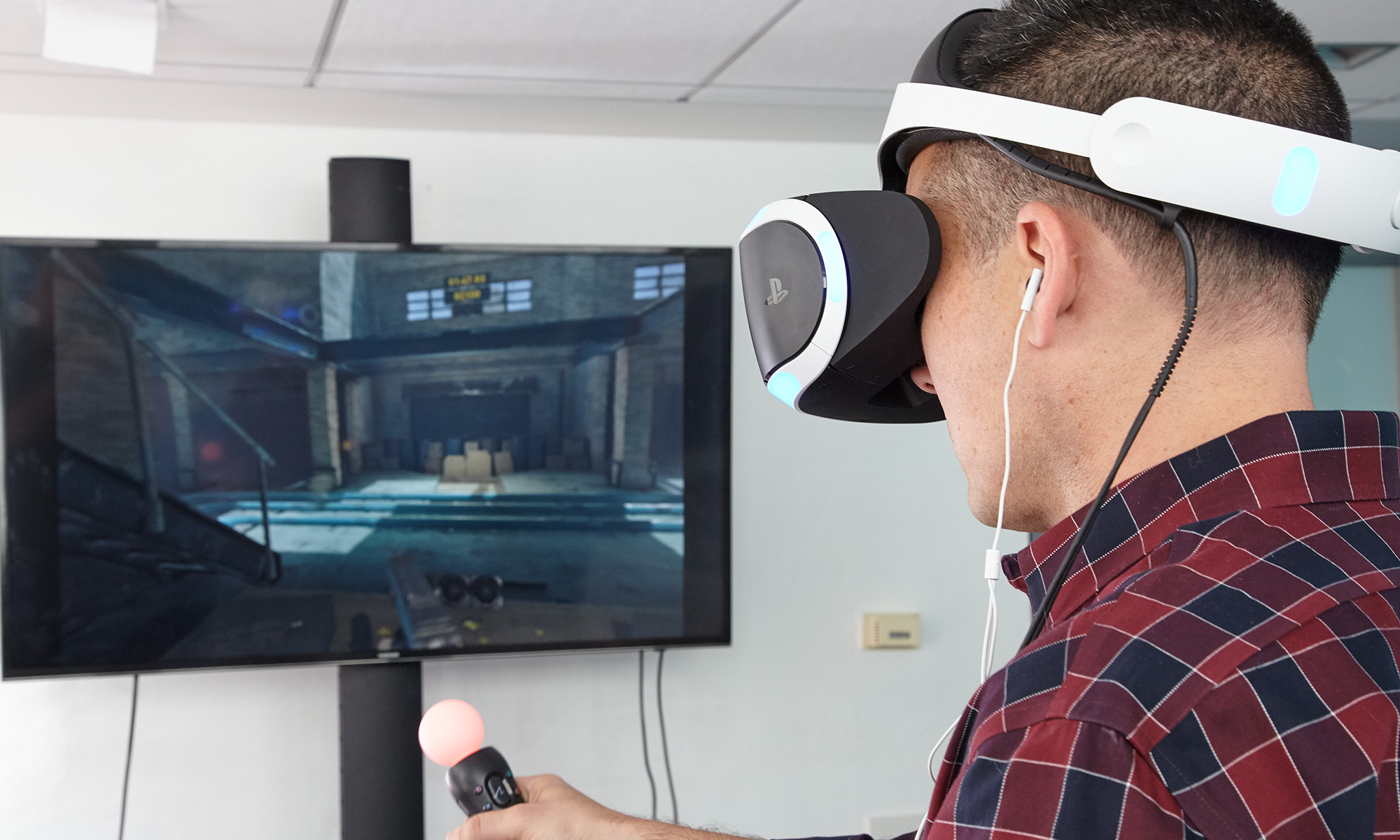
Once the power situation was covered, it was time to piece my virtual station together. Since the processor unit is running the show, the HDMI cable that normally would run between your console and the television now connects to the small black box. Another HDMI wire and a USB-to-micro-USB cord are tethered between the processor unit and the console.
From there, you connect the included camera to the PS4 and connect the power cords. Lastly, I slid back the right-side compartment on the processor unit to reveal the pair of connectors for the actual headset. Once connected, I was ready to fire up this baby.
After I turned on my TV, PS4 and PS VR, the system ran a quick update for my new piece of hardware. Then it was time for the software setup, which took about 7 minutes to complete. It probably would have gone faster, but I had a bit of trouble getting the camera into the proper position. I had to readjust everything during Batman: Arkham VR when the camera placed the start location in the center of my couch.
When everything was finished, I was looking at my PlayStation dashboard in my PS VR.
PlayStation VR review: Specs
The PlayStation VR has a resolution of 1920 x 1080 pixels per eye at a refresh rate of 90Hz or 120Hz, depending on the game and an approximately 100-degree field of view. The headset features Sony's Sixaxis motion-sensing technology, which is comprised of a three-axis gyroscope and a three-axis accelerometer.
By comparison, both the HTC Vive and Oculus Rift offer 1920 x 1200 per eye with a 90Hz refresh rate and a 110-degree field of view. Each headset has an accelerometer and gyroscope, but the Rift features a magnetometer and 360-degree positional tracking, while the Vive relies on laser positional tracking and a front-facing camera.
In terms of play-area dimensions, PS VR’s recommended measurements are 9.8 x 6.2 feet with the PS camera approximately 2 feet away. The Rift needs 5 x 11 feet, while the Vive requires 15 x 15 feet.
Although the PS VR can give a comparable visual performance, it doesn't stack up to either the Rift or the Vive. When I played Job Simulator on all three systems, I noticed that details like text weren't as sharp as they were on either the Vive or the Rift.
As far as actual room tracking, the Vive is still the only system that allows you to walk around your play space without fear of crashing into a wall or a piece of furniture. PS VR and the Rift are semi-stationary experiences for now.
PlayStation VR review: Little black box
Just as in an airplane, one of the most important components of the PS VR is its little black box.

However, the PS VR's processing unit job is to transmit rather than record. The processing unit is responsible for powering the Social Screen, which in the case of multiplayer titles like The Playroom VR makes sure the person wearing the headset will see one thing, while others in the room watching the TV will see another, allowing everyone to play. However, in most cases, Social Screen simply mirrors what's in the headset onto the television.

The processing unit’s other main function is supplying 3D audio to headphones plugged into the headset's inline remote. I was impressed with the pair of earbuds that shipped with the PS VR. The audio was crisp and loud, with good spatial positioning. I was on edge as I heard an enemy circling me underwater during my Batman playthrough.
PlayStation VR review: Sony's virtual world
Fantastical sky castles, terrifying haunted houses and gorgeous underwater vistas -- this is what PlayStation VR has to offer. While the Rift, Vive and Samsung Gear VR are focusing on apps and games, Sony is fully focused on provided a quality gaming experience. Of the titles I've had the chance to sample, my hands-down favorite is Batman: Arkham VR, in which I literally became the Dark Knight to solve a heartbreaking mystery.

As the Caped Crusader, I had the opportunity to throw Batarangs, shoot the grappling gun and break down a crime scene with the Forensic Scanner. While those activities were definitely a blast, it was the overall intense experience that left a lasting impression as well as raised the hair at the nape of my neck.
Did I scream and jump violently to my left, knocking over a conference phone in the process, when someone from Batman's famous rogues' gallery attacked me from the right? The answer is a strong maybe, and it's a really good example of why you need a clear play area.
For a more whimsical experience, I explored the world of Wayward Sky, pointing and clicking my way past robots, solving puzzles to get to the next part of the game. The height of my gameplay was when I fed a chicken and then used it to hitch a ride to the next level, all the while being pursued by an angry red robot.
Like a phoenix rising from the ashes, the Move controllers make a triumphant return as a pretty solid pair of virtual hands.
While Oculus and HTC both have solid games in their arsenal, most of them are demos that give players a taste of what the future could hold. PS VR titles feel complete and offer the challenging gameplay and fun I expect out of a video game. The immersion only helps to raise the fun factor.
PlayStation VR review: The return of Move
When they first debuted back in 2010, the PlayStation Move controllers were ahead of their time. A dearth of compatible games seemingly sealed the motion-based controllers’ fate to the Isle of Failed Tech. But like a phoenix rising from the ashes, the Move controllers make a triumphant return as a pretty solid pair of virtual hands, or whatever the particular game you're playing requires them to be.
The controllers are pretty much the same as when they were first released. Weighing 8.2 ounces, the controllers sport a long black plastic body with a white circular bulb resting at the top, which lights up depending on the game currently being played.=
Along the front of the device are smaller versions of the PlayStation traditional face buttons (Triangle, Circle, Cross and Square) gathered around the large oval Move button. Directly below them sits the PlayStation button, which launches the system menu when held for two seconds. Along the sides rest buttons for Select and Start with a single trigger in the back.
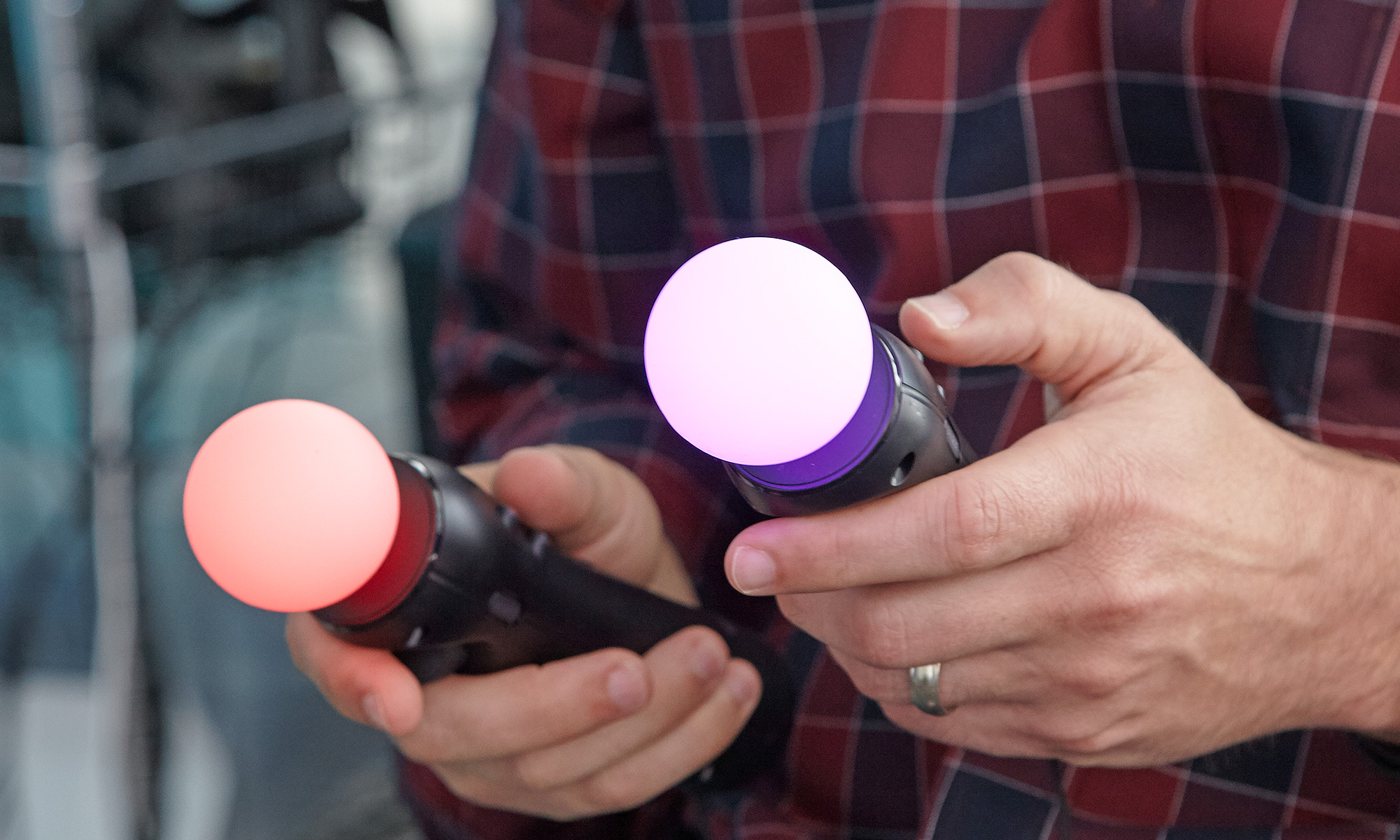
Some games only require a single Move, while others make use of two. But no matter what I played, they transitioned seamlessly between games. As I played Wayward Sky, one controller was all I needed to point and click my way through the sky castle. In Batman: Arkham VR, my pair of controllers became the bruised fists of the Caped Crusader. The controllers did a great job of blasting baddies in Until Dawn: Rush of Blood, allowing me to dual-wield weapons. f
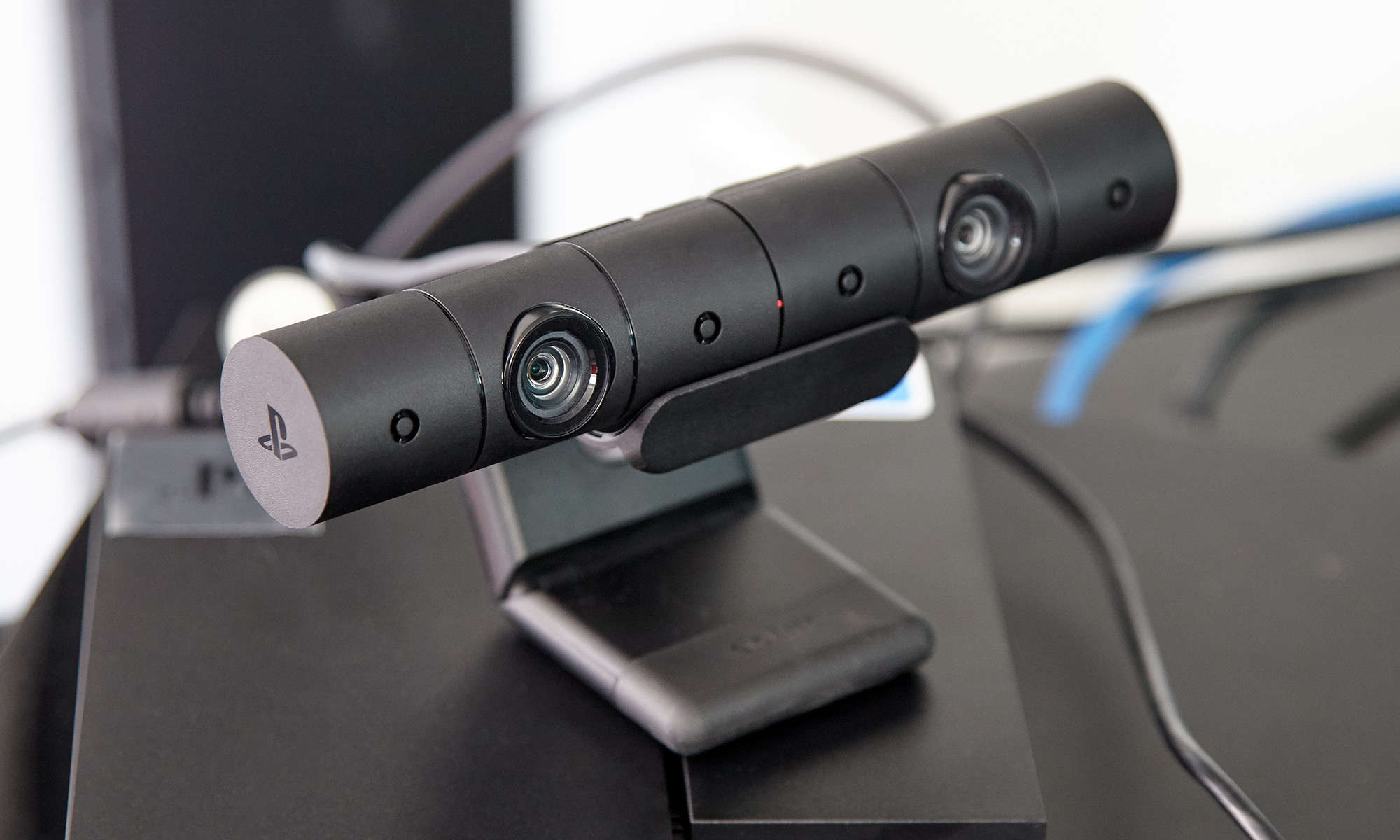
Using Move to navigate the PlayStation dashboard can take some getting used to. It took me a while to realize that I had to hold down the trigger button as I maneuvered the controller up, down, left or right to scroll. To capture video or screenshots, you have to hold down the Select button instead of the Share button on the traditional controller. Speaking of good old DualShock 4, games like Battle Zone only work with the traditional setup, not one or more Move controllers.
My only complaint about the Move controllers is how they charge. In a world ruled by micro-USB and USB Type-C devices, it boggles the mind that Sony decided to put a mini USB charging port on the controllers. Even the Vive controllers can be charged with micro-USB, so if something happens to the cord, they can be swapped out with another you have laying around the house.
I'm not sure if most households have a spare mini USB cable lying around. I know I don't, and I'm a tech journalist.
PlayStation VR review: Games and apps
At launch, PS VR players will have 30 games to choose among with prices ranging from free to $59.99. Most titles such as Batman: Arkham VR, Here They Lie and Until Dawn: Rush of Blood will be PlayStation exclusives. However, games such as Eve:Valkyrie, Job Simulator and Keep Talking and Nobody Explodes are available on other platforms. Sony is expecting to have 50 titles available by the end of 2016.
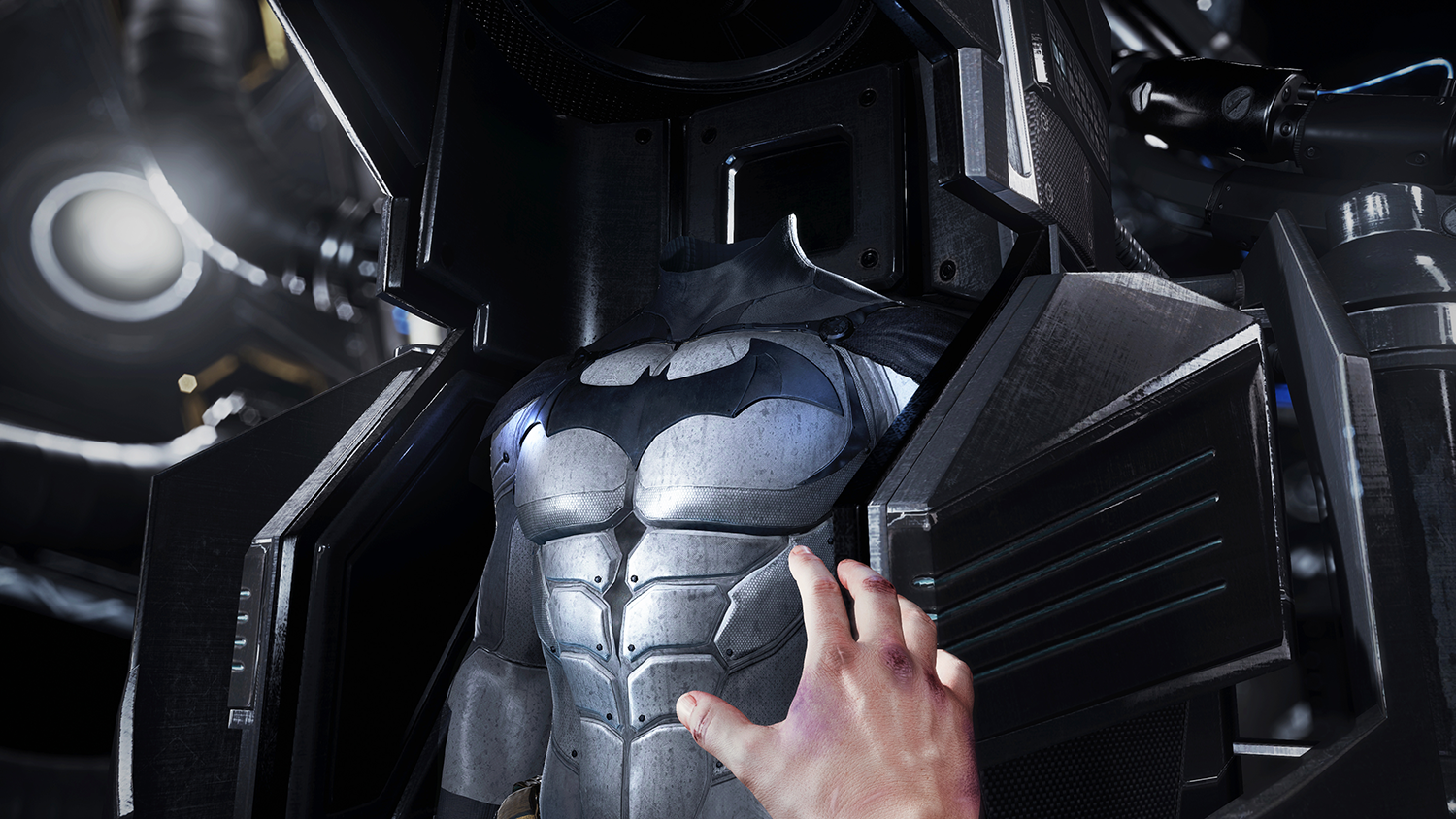
Thirty launch titles is not too shabby, especially when Vive and Rift launched with 28 and 30 titles, respectively. But Vive's library has grown to over 600 games and apps. PS VR's ultimate success will lie with the developers and publishers willing to create games for the platform.
If Sony can't prove to companies like Ubisoft, Blizzard and Activision that it’s worth their time to sign on for PS VR, the hardware will shrivel on the vine. But with Capcom's horrifying Resident Evil 7 and Double Fine's Psychonauts in the Rhombus of Ruin set to debut in 2017, it looks like PlayStation has the makings of a solid lineup.
PlayStation VR review: By the numbers
When it ships, the $399 headset will include the processing unit and all of the cables, minus one HDMI port. That means if you don't already have the Move controllers or a PlayStation camera, you're going to have to shell out $35 per controller and $59 for the camera, placing the price at $528. That's still cheaper than both the Oculus Rift and HTC Vive, which cost $599 and $799 respectively.
Gamers who don't currently own a PlayStation 4 or are thinking of upgrading to the PlayStation Pro will also have to set aside an additional $299 for the PlayStation Slim and $399 for the Pro. However, considering that some of the more affordable VR-ready laptops and desktops start at $999, PlayStation VR is still the most cost-effective option.
Keep in mind that PlayStation VR lacks the visual fidelity of either the Vive or the Rift, and that you're also missing out on both system's room-tracking abilities.
PlayStation VR review: Verdict
The battle for VR supremacy just got a lot more interesting. The $399 Sony PlayStation VR is an easy entry to gamers intrigued by virtual reality, but not wealthy enough to shell out $1,000 or more. For your money, you're getting a headset that's comfortable enough to wear for long periods of time and pretty easy to set up.

Although the VR experience isn't as visually pristine as either the Oculus Rift or HTC Vive, it’s not that far off, avoiding outright jagged graphics and the screen-door effect. PlayStation VR's main strength lies in its games, thanks to Sony’s relationships with well-known developers like Rocksteady, Capcom and Double Fine, which could promise a powerhouse library of content. As VR makes its steady ascent into the mainstream, I'm excited to see who'll embrace the platform next.
When it comes to the best virtual reality experience on the market, the crown still belongs to the Vive with its room-tracking capabilities, with the Rift delivering a solid stationary experience. However, PlayStation VR offers a value and ease of use that will make it the de facto VR device for the millions of gamers who already own a PlayStation 4.
Next: Sony has just said PSVR 2 will not play original PSVR games.

Sherri L. Smith has been cranking out product reviews for Laptopmag.com since 2011. In that time, she's reviewed more than her share of laptops, tablets, smartphones and everything in between. The resident gamer and audio junkie, Sherri was previously a managing editor for Black Web 2.0 and contributed to BET.Com and Popgadget.
